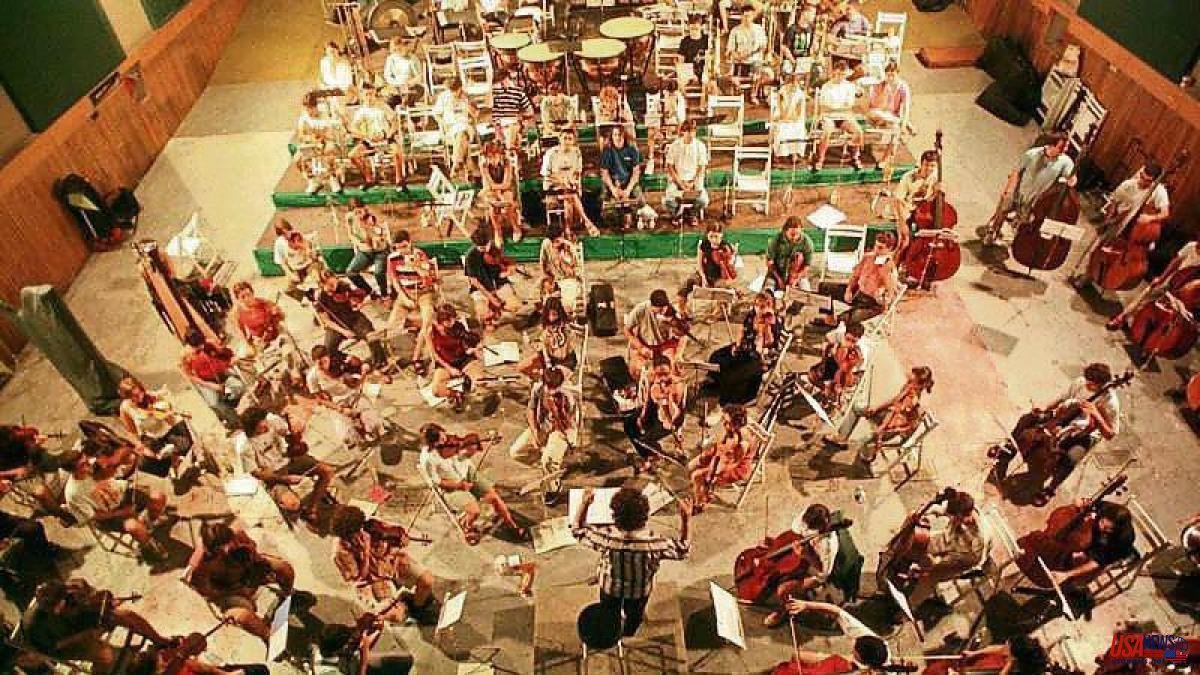The functioning of an orchestra not only contemplates a fluid communication between the musicians and a harmonious performance, but also the orderly and homogeneous visual impact that the public must receive for the optimal listening of the pieces.
Thus, in addition to the tailcoats or black clothing in general, the scores must clearly indicate the direction that the bows will take in each phrase, so that all the string instruments go in the same direction and there is no aesthetic chaos or mislead the violins that follow the head of their string, for example.
“Sometimes the publisher is asked for scores that have already been performed, so they come with the indicated bows, otherwise, the concertmaster is the one who is in charge of putting them on. In addition, they are reviewed by the heads of each string so that they are consistent with their own”, indicates Josep Pons, musical director of the Liceu.
Around the podium is the entire representation of a string quartet: first and second violins, violas and cellos, and behind it, because ultimately the strings of an orchestra is an extended quartet.
The first lecterns have great eye contact during the performance, and the rest behind are looking at the lectern in front. "If you make a mistake in an arc and instead of going up like everyone else you go down, you create a huge confusion," says the musician.
“And if you change at a given moment, the rest goes to the skull, but they automatically sign up. Everything is protocolized. The music stands go in pairs: the musician on the left points and the one on the right turns the pages, so they don't find themselves wanting to turn the page at the same time. And sometimes you authorize making different bows because it suits the cello better to guarantee the phrasing. The point is that they have to go to one for efficiency, but also for choreography”.
It is a discipline of centuries, very artisanal, which is passed from master to disciple. That is why it is laborious to create an orchestra, you have to find sounds that blend. But effectively the entire 20th century has passed without changing. Nor in lighting: always with white light.
“Karajan, who was also the first to make a different suit for the orchestra, with a different collar, speculated about the lights, but the fact is that we went through the entire 20th century, which is the century of electricity, without evolving. Just like in rock













